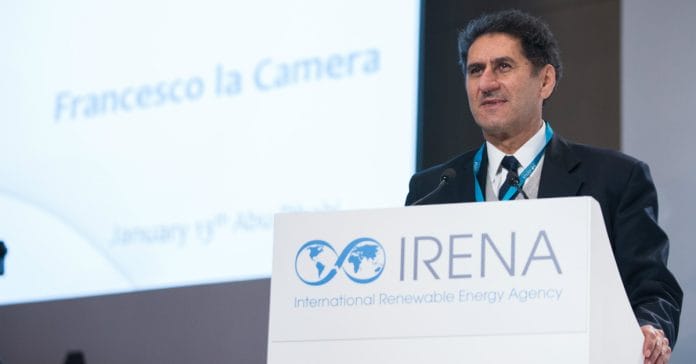There exists clear inequality in renewable energy (RE) investments as deployments continue to grow despite global organisations posting a record year in capacity additions in 2022.
Speaking at the Energy Transition Conference 2023 organised by Tenaga Nasional Bhd (TNB) in Kuala Lumpur recently International Renewable Energy Agency (IRENA) Director General Francesco La Camera said by increasing energy efficiency measures and use of renewables, Malaysia can reduce 25% and increase its share of the RE mix from 5% today to almost 60% by 2050.
“In the 1.5°C Scenario (1.5-S), electricity will make up to 40% of final energy consumption by 2050 from 21% today – doubling electricity demand to 348 TWh by 2050. The majority of new capacity will need to be from renewables. In the near term to 2030, Malaysia will need to scale up its solar PV to 17 GW and EVs to over 3 million. Overall, the investment in energy transition technologies will amount to USD50 billion to 2030.”
The success achieved this decade in reducing greenhouse gas emissions will determine whether global temperature rise can be limited to 1.5°C of pre-industrial levels this century, in line with the objectives of the Paris Agreement. Irena’s 1.5°C Scenario, set out in the World Energy Transitions Outlook, presents a pathway to achieve the 1.5°C target by 2050, positioning electrification and efficiency as key transition drivers, enabled by renewable energy, clean hydrogen and sustainable biomass.
La Camera said, in the longer term to 2050, cumulative energy transition investment in Malaysia will reach to USD375 billion, including installing RE capacity, infrastructure and Energy Efficiency (EE) — phasing out the need for fossil fuel subsidies.
Transitioning towards the energy transition technologies in the 1.5-S will save Malaysia between USD13 billion annually in avoided cumulative energy, climate and health costs. Energy-related energy emissions be reduced up to 60% in the 1.5-S compared to present levels.
La Camera added that Circular Economy practices are one of the most important pillars for achieving emission reduction targets and accelerating the energy transition. In Malaysia, projections show that recyclable materials from solar PV waste can exceed 7 million tonnes by 2040 and 17 million tonnes by 2450 in the 15C Scenario.
The steel sector is one of the most significant contributors to climate change responsible for about 7% of global energy related carbon emissions.
La Camera stressed transition will be a main driver of demand for critical minerals, as “no country can fulfil its demand for all critical materials alone which allows global organisations and governments alike a chance to rewrite the legacy of the extractive industry.”
It’s important to note that Global RE capacity addition rose to 295GW (gigawatts) in 2022, compared with just slightly above 150GW as recently as in 2018, according to Irena’s World Energy Transition Outlook Report 2023. However, RE investments have been unequal across regions, with more than half of the world’s population receiving only 15% of such investments.
Disparities in per capita investments in the sector “have more than doubled” in 2021, compared with 2015 levels, La Camera said, pointing to per capita capacity of around 1.2MW (megawatt) in Oceania and Europe, compared with as low as 0.04MW in Africa, and 0.1MW in the Middle East.
“85% of this investment benefits less than 15% of the population. We need to address this imbalance urgently, by quadrupling annual investment and more equitable financial flow,” La Camera said during the plenary session at The Energy Transition Conference 2023.
While Irena studies found that RE costs have been decreasing, equitable energy actions must be ensured. “Expanding RE deployments to developing nations being deprived of access, is a moral imperative,” he said.
According to the Energy Transition Commission, the transition would require 6.5 billion tonnes of end-use materials from 2022 to 2050, of which 95% would be steel, copper and aluminium, with the remaining 325 million tonnes or 5% derived from critical minerals such as lithium, cobalt, graphite and other rare earth minerals.
The trends expected by Irena in the foreseeable future of energy transition include physical constraints, as demand for critical materials like rare earth elements rise, aside from development of disruptive innovations, and potentials of scaling up circular economy both to address consumption of such materials. “The energy transition will be the main driver of demand for critical minerals, and no country can fulfill its demand for all critical materials alone. This is a chance to rewrite the legacy of the extractive industry,” La Camera said.
At the same time, key geopolitical risks loom over the supply of such materials, ranging from resource nationalism to export restrictions, presence of mineral cartels and market manipulations.
“The most important variable in energy transition is time,” La Camera said, adding, “We need to triple the existing RE capacity to meet the 1.5°C pathway (by 2050). And if we do not do it now (the annual commitment increases over time), we will not have the capacity to do all this. The costs will rise dramatically, and we simply cannot get the results done (in addressing the temperature rise).”









